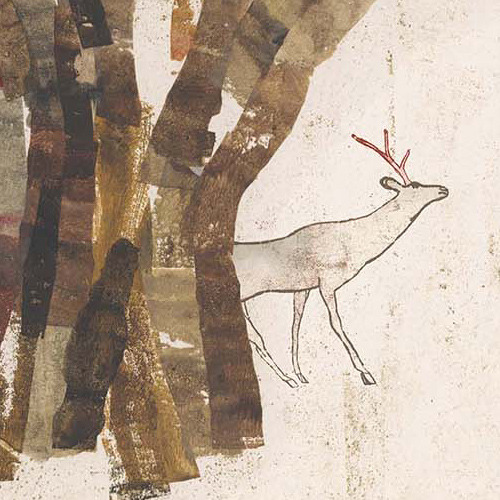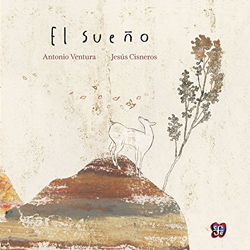< Back to posts
Jesús Cisneros
Spain

Jesús Cisneros studied illustration at the School of Art in Zaragoza, and has since illustrated a wide range of books for publishers such as Libros del Zorro Rojo, OQO Editora and Fondo de Cultura Económica. Jesús won the Lazarillo Illustration Prize and his artwork was selected for the prestigious Bologna Illustrators Exhibition.
In this post, Jesus talks about his fascinating approach to illustrating the poetic ‘El Sueño’ (The Dream). This beautiful picturebook was written by Antonio Ventura and is published in Spanish by Fondo de Cultura Económica.
Jesús: ‘El Sueño’ (The Dream), written by Antonio Ventura, tells the story of a young birch tree fascinated by the singing of a bird. It can be read as a metaphor of our desires: our dreams which sometimes look unattainable, impossible.
The illustrations for this book appeared very slowly. I worked without a definite storyboard. I wanted the artwork to guide me, accepting and incorporating what I found along the way.
The core of the story was something which was hard to represent: the singing of a bird. It was also what attracted me the most. I thought of the relationship between colour and music. I thought of the sounds' rhythm and the rhythm of the visual composition. I thought of the musical inspiration of some painters, especially Paul Klee, who was a musician and painted music.
Another subject that interested me was the representation of the forest and other animals.
I drew the animals; the colour was reserved for the singing. Colour could be intense and precise, or more blurry, soft and distant.
For the forest, instead of a realistic representation of the scenes, I was looking for an environment, an atmosphere close to the text's intimate tone. I used oil-transfer on paper, heavily diluted in oil, and a range of neutral colours: greys, ochres, earths.
In contrast, I wanted the singing to be luminous, vibrant. In the end I worked with silk paper which I coloured and cut into pieces, sometimes very small.
Along the way, I decided to change the shapes so they transformed from one page to another.
In ‘El Sueño’, there are several stories intertwined. Even if they cannot move, the two trees – one young and one old – feel, aspire. There is a relationship between the two that has a magical outcome at the end of the story.
Although this is not mentioned in the text, these trees see themselves reflected in a couple of stags, male and female, as if they were a mirror. It is in the forest, transfigured by the singing birds, where these two stags will meet. The result of this encounter is the new life with which this book comes to an end.
Illustrations © Jesús Cisneros. Post translated by Gengo and edited by dPICTUS.
El Sueño / The Dream
Jesús Cisneros
Fondo de Cultura Económica, Mexico, 2014
Every year in early spring, everyone's hopes and dreams blossom. A young birch tree dreams of birdsong and waits for birds to land in its branches... but the birds do not venture out of the forest to the gorge where the birch lives. An old oak watches the young tree in silence, touched by its longing. The oak wants to help...
- Spanish: Fondo de Cultura Económica
- Turkish: FOM Publishing House

















